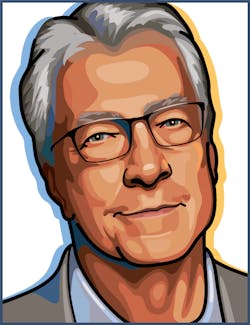
I first visited China in 2001, just as the economy was taking off. There, I had the opportunity of touring the labor-intensive transceiver production lines of a company in Wuhan. In subsequent trips, I’ve observed the breathtaking speed with which China is modernizing its infrastructure and industries.
During my November 2015 visit, it was clear that Wuhan has probably doubled in size, although it still has the feel of an industrial city of grit and overcrowded roads. It is also the center of Optics Valley China (OVC), with extensive fiber optics research and manufacturing facilities, numerous universities, and industrial manufacturing companies that are turning to automation and lasers to meet rising consumer demand and international quality standards.
While in Wuhan, I spoke at LaserFocusCon, a conference organized by our colleagues at Laser Focus World China and held during the 12th OVC International Optoelectronics Exhibition and Forum (November 12-14). The meeting room was packed with engineers less interested in my talk on market trends than in the speakers from laser makers Trumpf, IPG Photonics, Rofin Sinar, Laserline, Dilas, and Focuslight Technologies. The audience hunger for technical solutions was clear—for companies like Trumpf and IPG Photonics, China is their largest international market and they are not seeing a slowdown in demand.
One of the most interesting talks was by Min Dayong, president of HG Tech Company (a national innovation enterprise). He described the government’s Made in China 2025 roadmap for turning China into the world’s leading manufacturing country in the next 10 years, including the goal of creating a “golden decade for the laser industry.” This roadmap is based on the German initiative Industry 4.0, which calls for the creation of a “smart factory” that incorporates automation, data exchange, and manufacturing technologies into intelligent networks. Trumpf is deeply invested in this initiative and, as Andreas Weller, general manager of Trumpf in China, pointed out in his talk, such a strategy requires advanced IT and security measures plus access to global digital resources—-China’s firewall on the Internet is a barrier that must be addressed.
A few days earlier I had visited Xi’an, an ancient capital of China in the north. My host, Focuslight Technologies, had recently completed a new high-power laser diode manufacturing facility that rivals any I have seen. In his June 2014 Business Forum column, Milton Chang interviewed the founder and president of Focuslight, Victor Liu, and captured the company’s obsession with quality as the only path to long-term success in China, especially as over 50% of its sales are to international customers with medical and industrial applications. Even with 14,000 m2 of R&D and cleanroom areas filled with the latest packaging and test equipment, more progress is planned. The next step, according to executive VP Gordon Xu, is more automation.
I thought later of all the terracotta warriors I saw that day when I visited the fantastic necropolis of Emperor Qin Shi Huang just outside of Xi’an—-the thousands of statues buried in long lines to protect the ruler who united China in 221 BCE is a wonder of the world (see figure). And I remembered all the lines of young women in Wuhan, back in 2001, toiling away at assembling laser components. Automation in China’s laser industry should indeed bring a golden age.
Image credit: Terracotta Army, View of Pit 1 by Jmhullot. Licensed under CC BY 3.0 via Wikimedia Commons.

Conard Holton
Conard Holton has 25 years of science and technology editing and writing experience. He was formerly a staff member and consultant for government agencies such as the New York State Energy Research and Development Authority and the International Atomic Energy Agency, and engineering companies such as Bechtel. He joined Laser Focus World in 1997 as senior editor, becoming editor in chief of WDM Solutions, which he founded in 1999. In 2003 he joined Vision Systems Design as editor in chief, while continuing as contributing editor at Laser Focus World. Conard became editor in chief of Laser Focus World in August 2011, a role in which he served through August 2018. He then served as Editor at Large for Laser Focus World and Co-Chair of the Lasers & Photonics Marketplace Seminar from August 2018 through January 2022. He received his B.A. from the University of Pennsylvania, with additional studies at the Colorado School of Mines and Medill School of Journalism at Northwestern University.